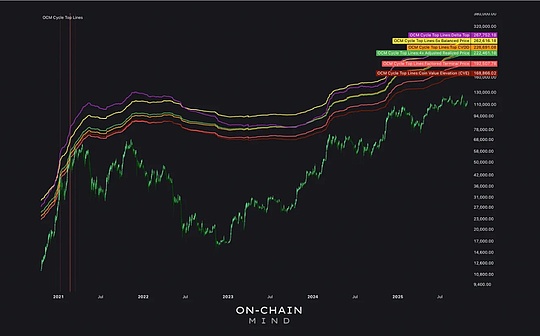
Crypto market plummeted, triggering large-scale clearanceCalculate
Cryptocurrency markets have been sluggish since August 2, mainly due to geopolitical tensions, a sharp sell-off in Japanese stocks due to interest rate hikes in Japan, weak U.S. jobs data and recession concerns, and major tech and retail giants released weaker than expectedRevenue reports triggered large-scale selloffs of technology stocks, etc.
On August 5, with the sharp decline in traditional financial markets such as Japan, the crypto market also ushered in a plunge. The entire network exchange lost $1 billion in 24 hours, of which $350 million in BTC was lost and $3.42 in ETH was lost.$100 million.
According to a report by on-chain analyst @EmberCN (Ember), a sharp drop in ETH prices triggered a wave of on-chain leverage liquidation for ETH whales, exacerbating the decline.Multiple whale addresses were forced to sell their holdings of ETH to repay the loan, including:
The address starting with “0x1111” liquidated 6,559 ETH to repay the 277.9 WBTC loan.
The address starting with “0x4196” liquidated 2,965 ETH to repay a USDT loan of $7.2 million.
The address starting with “0x790c” liquidated 2,771 ETH to repay a USD 6.06 million USDC loan.
The address starting with “0x5de6” liquidated 2,358 ETH to repay a USD $5.17 million loan.
CoinGecko data shows that over the past week, ETH has plummeted from around $3,300 to below $2,200, a drop of more than 30%.Other factors in the ETH plunge include increased market leverage liquidation pressure and news that Jump Trading has sold ETH in large quantities.
[Note: According to on-chain analysis website Spot On Chain, on August 5, Chicago trading company Jump Trading’s crypto wallet transferred 17,576 ETH worth more than $46 million to a centralized exchange.Fortune magazine reported on June 20 that the U.S. Commodity Futures Trading Commission (CFTC) is investigating Jump Trading’s cryptocurrency investment activities.The wallet has transferred nearly 90,000 ETH to the exchange since July 25, and after the market plummeted, the wallet still holds 37,600 wstETH and 11,500 stETH from the Lido protocol.】
Julian Hosp, CEO and co-founder of decentralized platform Cake Group, believes that “the plunge in ETH is related to Jump Trading, which may be due to the company being margined in traditional markets and needs to obtain liquidity over the weekend, or due to regulatory reasons.Opt out of the cryptocurrency business.”
According to a research report by 0xScope, the five major market makers have sold a total of 130,000 ETH since August 3.Among them, Wintermute sold more than 47,000 ETH, followed by Jump Trading, with more than 36,000 ETH, and Flow Traders ranked third with 3,620 ETH.GSR Markets also sold 292 ETH, while Amber Groupd sold 65 ETH.Although Wintermute sold the most ETH, Jump Trading started selling ETH last weekend, leading other mainstream market makers.
The chain reaction of the above incident resulted in the liquidation amount of ETH within one hour as high as US$100 million, and the total liquidation amount of 24 hours exceeded US$445 million.On August 5, loan clearing on the DeFi platform exceeded US$320 million, a record high this year, according to Parsec.Among them, the liquidation amount of ETH collateral is US$216 million, wstETH is US$97 million, and wBTC is US$35 million.
With ETH at a low of nearly $2,100, the highest gas fee on Ethereum reached 710 gwei.It is worth noting that if ETH continues to fall to $1,950, the crypto assets worth $92.2 million in the DeFi protocol will be liquidated; if ETH falls to $1,790, there will be US$271 million in the DeFi assets to be liquidated.
After this plunge, the long leverage in the crypto market was cleared on a large scale, and a large number of short-term spot holders exited the market, and the market fundamentals were shaken but not destroyed.The crypto market fear and greed index fell to 26 (fear state), at a low level since 2023, and there is little room for continued decline in the short term.
Where does ETH spot ETF go?
Judging from the data of BTC spot ETF, although there has been a period of net outflows in the middle (mainly from the sell-off of grayscale GBTC), the overall cumulative net inflow is still around US$17.5 billion, which is also the reason why BTC prices are relatively strong.
In contrast, the net inflow data of ETH spot ETFs is in a bad situation of macroeconomic environment turmoil and a sharp decline in risk markets such as the US stock market. Therefore, the cumulative net inflow is -511 million US dollars, and the total asset market value is also relatively large compared to BTC.Small.Among them, Grayscale’s ETHE accounts for most of the outflows, worth more than US$2.1 billion, while other ETF issuers are in net inflows.As Grayscales ETHE still holds more than $5.97 billion worth of ETH, further outflows are likely to occur in the coming weeks.
At present, from the perspective of the recognition and acceptance of traditional markets, there is still a big gap between ETH and BTC.Although ETH is still only a “supporting role” of BTC spot ETFs, it marks a significant regulatory progress in the crypto industry and is of great significance in the long run.As traditional institutions further understand the fundamentals of ETH, more potential funds will flow into ETH in the future.
After the market plummeted, Circle CEO said, “In the face of global macro volatility, we should focus on technology, industry and adoption rather than price, and we still insist on being optimistic about the crypto industry.” Judging from historical data, the cryptocurrency industry often took place in August and September.It performed poorly, but the trend after October was relatively optimistic.
According to the data on August 5, ETH’s market value is US$273.4 billion, ranking 37th in the global company market value list, lower than the market value of Coca-Cola and Bank of America, and even lower than Berkshire’s after Buffett reduced his position in Apple.Cash reserves ($276.9 billion).
As the leader of cryptocurrency application-oriented public chains, it has great potential in technology adoption and innovation. After the decline in ETH’s market value has also created better layout opportunities for institutions.In addition, the market believes that the Fed is likely to initiate a rate cut in September.The Fed’s interest rate cut is enough to hedge the impact of the yen in the short term, when the release of market liquidity may bring more capital injection to ETH spot ETFs.








